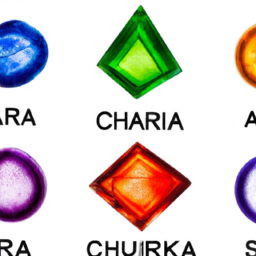
Chakras, also known as energy wheels, are believed to be the energy centers in our body. According to ancient Indian and yogic traditions, there are seven major chakras that are located along the spine. These chakras are said to be responsible for our physical, emotional, and spiritual well-being.
The exact origins of these seven chakras are unknown, but it is believed that they date back to over 5,000 years ago. The word “chakra” comes from the Sanskrit word meaning “wheel” or “disc.” This is because the energy at each chakra is said to rotate in a circular motion, creating a spinning wheel of energy.
The Concept of Chakras in Hinduism and Buddhism
The concept of chakras is deeply rooted in Hinduism and Buddhism. In Hinduism, the seven chakras are associated with the seven deities of the Hindu pantheon and are thought to represent the different stages of spiritual awakening. In Buddhism, the chakras are considered to be the six spiritual centers along with the crown chakra which connects us to the universal consciousness.
According to these ancient traditions, the chakras are not just energy centers but are also connected to our physical, emotional, and mental health. The condition of each chakra is said to reflect our state of mind, body, and soul.
The Seven Chakras and Their Meanings
Each of the seven chakras has its own unique meaning and significance in our lives. They are believed to influence different aspects of our being and help us to achieve balance and harmony. Here is a brief overview of the seven chakras and their meanings:
1. Root Chakra (Muladhara)
The root chakra is located at the base of the spine and is associated with our sense of security, stability, and survival instincts. It represents our physical existence and is associated with the color red.
2. Sacral Chakra (Svadhishthana)
The sacral chakra is located in the lower abdomen and is connected to our sexual and creative energy. It is associated with our emotions, desires, and pleasure and is represented by the color orange.
3. Solar Plexus Chakra (Manipura)
The solar plexus chakra is located in the upper abdomen and is associated with our personal power and self-esteem. It is responsible for our sense of confidence, willpower, and motivation and is represented by the color yellow.
4. Heart Chakra (Anahata)
The heart chakra is located in the center of the chest and is associated with love, compassion, and forgiveness. It is believed to be the bridge between the lower and upper chakras and is associated with the color green.
5. Throat Chakra (Vishuddha)
The throat chakra is located in the throat region and is associated with our ability to communicate and express ourselves. It is responsible for our self-expression and creativity and is represented by the color blue.
6. Third Eye Chakra (Ajna)
The third eye chakra is located between the eyebrows and is associated with intuition and psychic abilities. It is believed to be the center of our wisdom and inner knowledge and is associated with the color indigo.
7. Crown Chakra (Sahasrara)
The crown chakra is located at the top of the head and is associated with our connection to the divine and spiritual consciousness. It is believed to be the source of our enlightenment and is associated with the color violet or white.
The Importance of Balancing the Chakras
When our chakras are balanced and aligned, we experience a sense of well-being and wholeness. However, if one or more chakras are blocked or imbalanced, it can lead to physical, emotional, and spiritual issues. This is why it is important to keep our chakras in balance through various practices such as yoga, meditation, and chakra healing.
By understanding the origins and meanings of the seven chakras, we can gain a deeper understanding of our own mind, body, and soul. We can also learn to recognize and take care of any imbalances in our chakras, leading to a happier and healthier life overall.
In Conclusion
The origin of the seven chakras can be traced back to ancient Indian and yogic traditions. These energy centers are an integral part of Hinduism and Buddhism and are believed to influence our physical, emotional, and spiritual well-being. By understanding and balancing our chakras, we can achieve balance and harmony in all aspects of our lives.





Very informative post.
JohnCooper: Interesting article!
This article provides a unique insight into the ancient practice of chakra balancing.